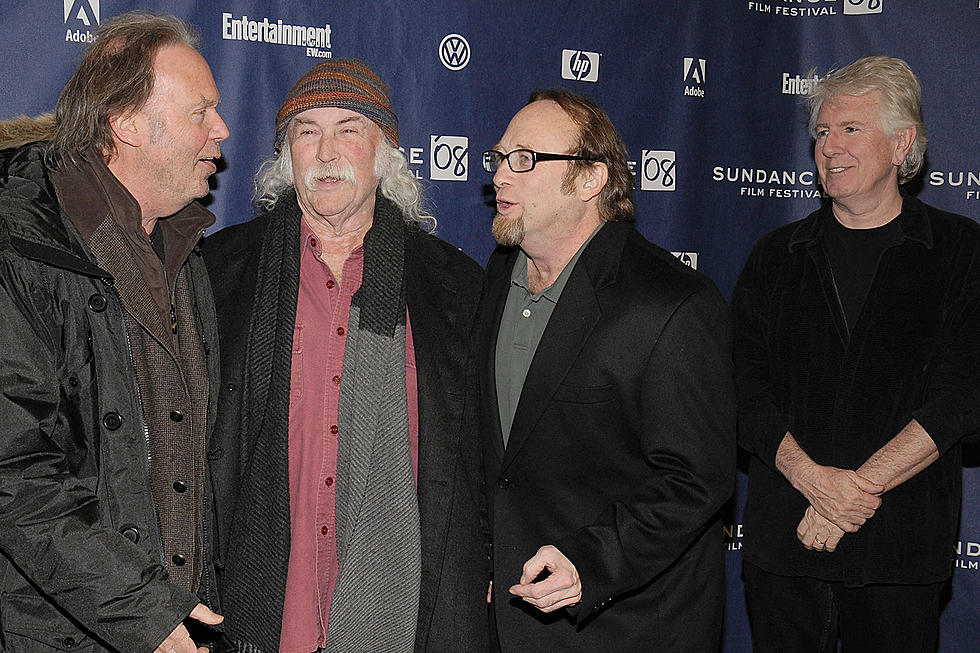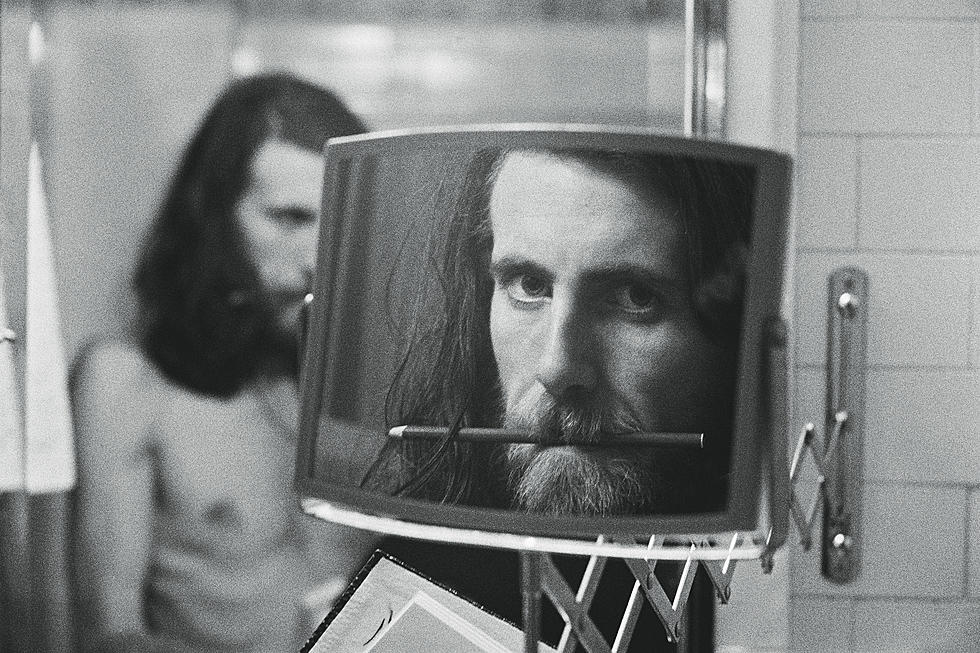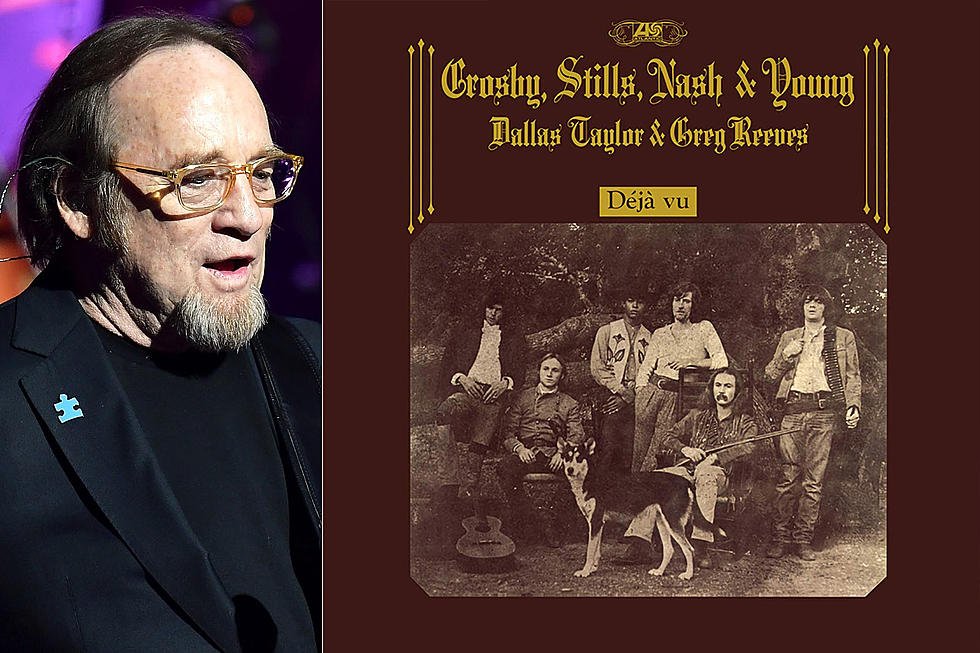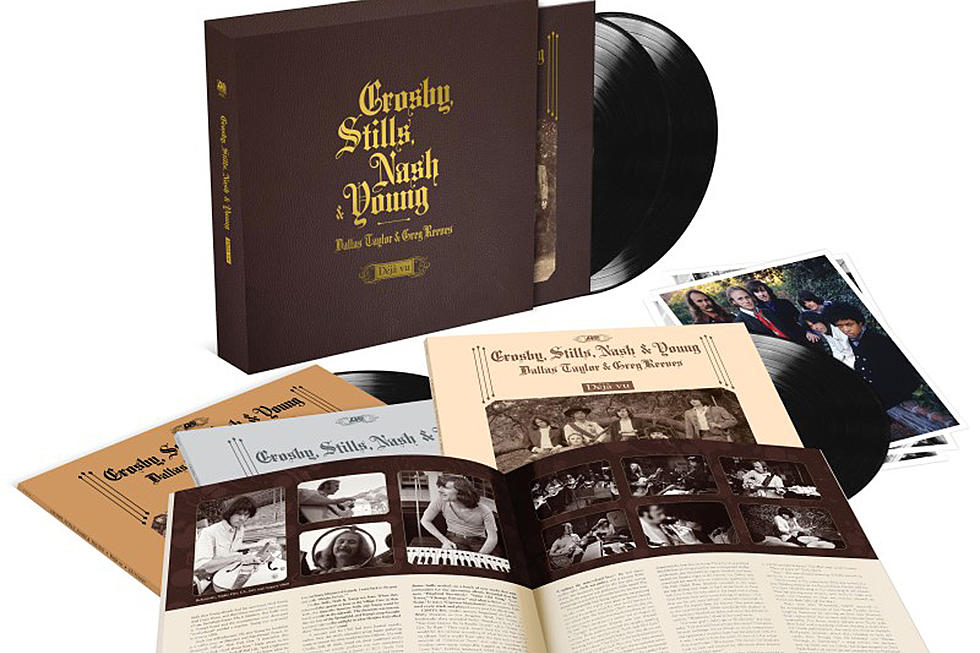
How Four Combustible Stars Aligned for Crosby Stills Nash & Young’s ‘Deja Vu’
The addition of Neil Young to the Crosby, Stills & Nash supergroup in 1969 created great expectations for the band’s second album, Déjà Vu. The follow-up didn't disappoint fans, who took the record to No. 1 album after its release on March 11, 1970.
David Crosby, Stephen Stills and Graham Nash set the bar high with their 1969 debut, Crosby, Stills & Nash, a deft mix of folk and rock that featured intricate three-part harmonies. Nash said the first album's success made the addition of a fourth member a necessary evil.
"When we finished the first record, we realized two things: One, that we had a big hit on our hands, because everybody was just wiped on the floor with it, and two, that we would have to go on the road,” Nash told Music Radar. “Stephen played every instrument on that record except for the drums and the acoustic guitars that David and I played on our songs. He played bass, he played organ, he played lead guitar, he played rhythm guitar, he played everything. Captain Many Hands we called him.”
Jimi Hendrix and Steve Winwood were asked to join CSN but refused. Atlantic Records’ head Ahmet Ertegun then suggested Young, Stills’ former bandmate in Buffalo Springfield. Nash was underwhelmed with the idea but agreed to meet with Young in New York's Greenwich Village.
"I didn't think we needed anybody else, but I said, 'Okay, if you're so adamant, I have to meet this guy,'" he recalled. "I knew him as a songwriter, but I didn't know if I'd like him, if I could hang with him — all of that stuff. So I had breakfast with Neil on Bleecker Street, and after that I would have made him king of the world. He was funny, he was dry, he was dedicated and he was a special man. I realized that right off."
Listen to Crosby Stills Nash and Young Perform 'Déjà Vu'
In the summer of 1969, Crosby, Stills, Nash & Young performed together at the Woodstock festival and began recording Déjà Vu in Los Angeles with bassist Greg Reeves and drummer Dallas Taylor. The turmoil in the band's personal lives carried over to the sessions. Stills had split with singer Judy Collins; Nash broke up with Joni Mitchell. Crosby’s girlfriend Christine Hinton had recently died in a car accident.
“I was at the worst place I’d been in my whole life. I would walk into the sessions and break down crying.” Crosby told Crawdaddy in 1974. "I couldn’t function. I was in love with that girl.
“Atmosphere and feeling – now, they count for much more than the actual technical quality of the music. During Déjà Vu, I felt awful. To me, it communicates. There’s good art on Déjà Vu, but you can’t put it on and feel like it’s a sunny afternoon the way you can with Crosby Stills & Nash.”
The LP's biggest single was "Woodstock," which peaked at No. 11 on the Billboard chart. It was the only song not written by a member of the band. Mitchell composed "Woodstock" in New York City as she watched news reports of the historic festival. CSNY sped up the tempo of Mitchell’s ethereal folk song to create one of the band’s signature tunes.
Listen to Crosby Stills Nash and Young Perform 'Carry On'
Crosby wrote "Almost Cut My Hair," a take on the divisions between hippies and the establishment. John Sebastian of the Lovin' Spoonful provided harmonica on Crosby’s "Déjà Vu," a reference to the feeling that something you’ve experienced has happened before.
Crosby told The Guardian that his belief in reincarnation inspired the title track: "I'm one of those people who thinks we go round again. The Buddhists have got it right — it's a wheel and we get on and get off. I think life energy gets recycled. That's why I wrote 'Déjà Vu.'"
Stills contributed "Carry On," a harmony-rich rocker that opens the album, and "4 + 20," a solo effort on love lost. Nash wrote two of the three hit singles from Déjà Vu. "Teach Your Children," which features tasty steel guitar by Jerry Garcia, advocates love and understanding between parents and children. The sweet "Our House" was written while Nash lived with Mitchell at her Laurel Canyon home in California.
"Country Girl" by Young combines three songs: "Whiskey Boot Hill," "Down, Down, Down" and "'Country Girl (I Think You’re Pretty)." Young makes an unsubtle dig at celebrity with the line, “While stars sit in bars and decide what their drinking / They drop by to die 'cause it's faster than sinking.”
Young also wrote "Helpless," a melancholy look back at his home in Ontario that has become one of his best-loved songs. Young partnered with Stills to write the album closer, "Everybody I Love You." Though the harmonies are tight, the four stars did not closely collaborate on most songs during the recording of Déjà Vu.
Listen to Crosby Stills Nash and Young Perform 'Woodstock'
“The band sessions on that record were 'Helpless,' 'Woodstock' and 'Almost Cut My Hair,'” Young told Rolling Stone in 1975. “That was Crosby, Stills, Nash & Young. All the other ones were combinations, records that were more done by one person using the other people.
"'Woodstock' was a great record at first. It was a great live record, man," Young added. Everyone played and sang at once. Stephen sang the shit out of it. The track was magic. Then, later on, they were in the studio for a long time and started nitpicking. Sure enough, Stephen erased the vocal and put another one on that wasn’t nearly as incredible. They did a lot of things over again that I thought were more raw and vital sounding. But that’s all personal taste.”
Nash remembered: “The only track that I remember we played on together was 'Helpless,' and it was only at three in the morning, when we'd run out of cocaine and we could play slow enough for Neil to dig it. Neil would record in Los Angeles, then he'd bring the recording to the studio and we'd put our voices on, and then he'd take it away and mix it himself.”
Stills told Hit Parader in 1971: “Getting that second album out of us was like pulling teeth. That’s why it took 800 hours to produce, and why the first album took 600 hours. There was song after song that didn’t make it. Others had to be worked on an awful lot. The track, 'Déjà Vu,' must have meant 100 takes in the studio. But 'Carry On' happened in a grand total of eight hours from conception to finished master. So you never know.”
Top 40 Singer-songwriter Albums
The Best Crosby, Stills, Nash and Young Fight Stories
More From Ultimate Classic Rock









